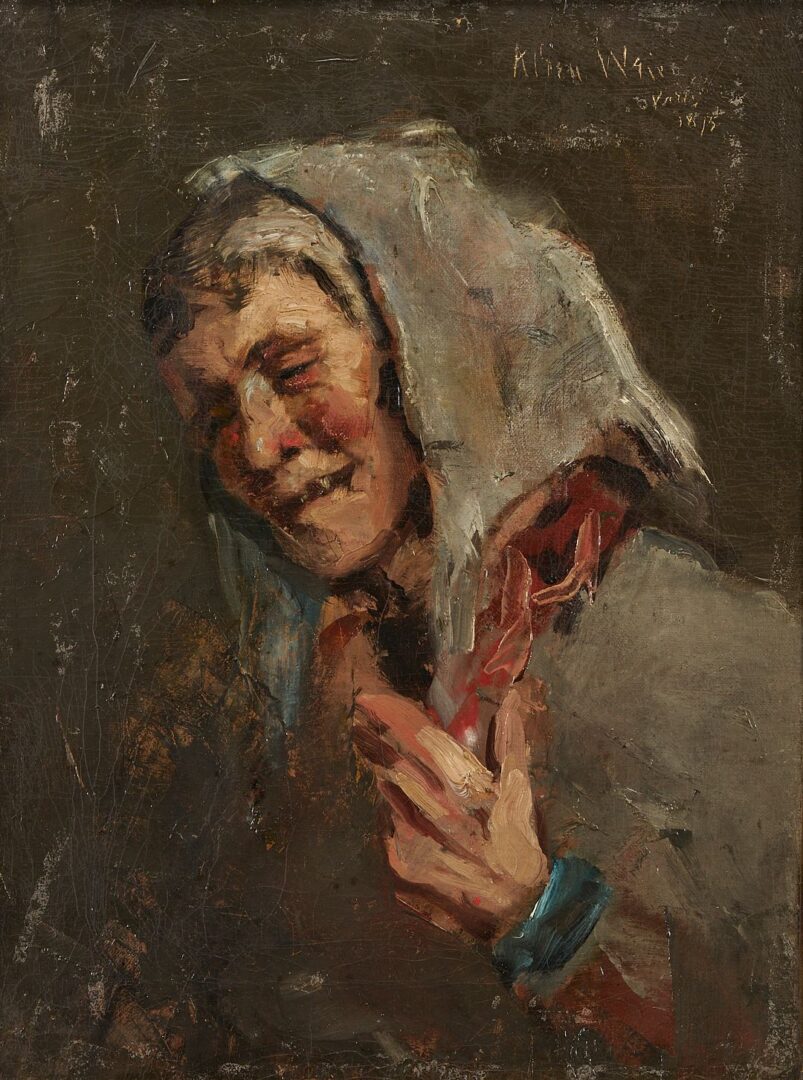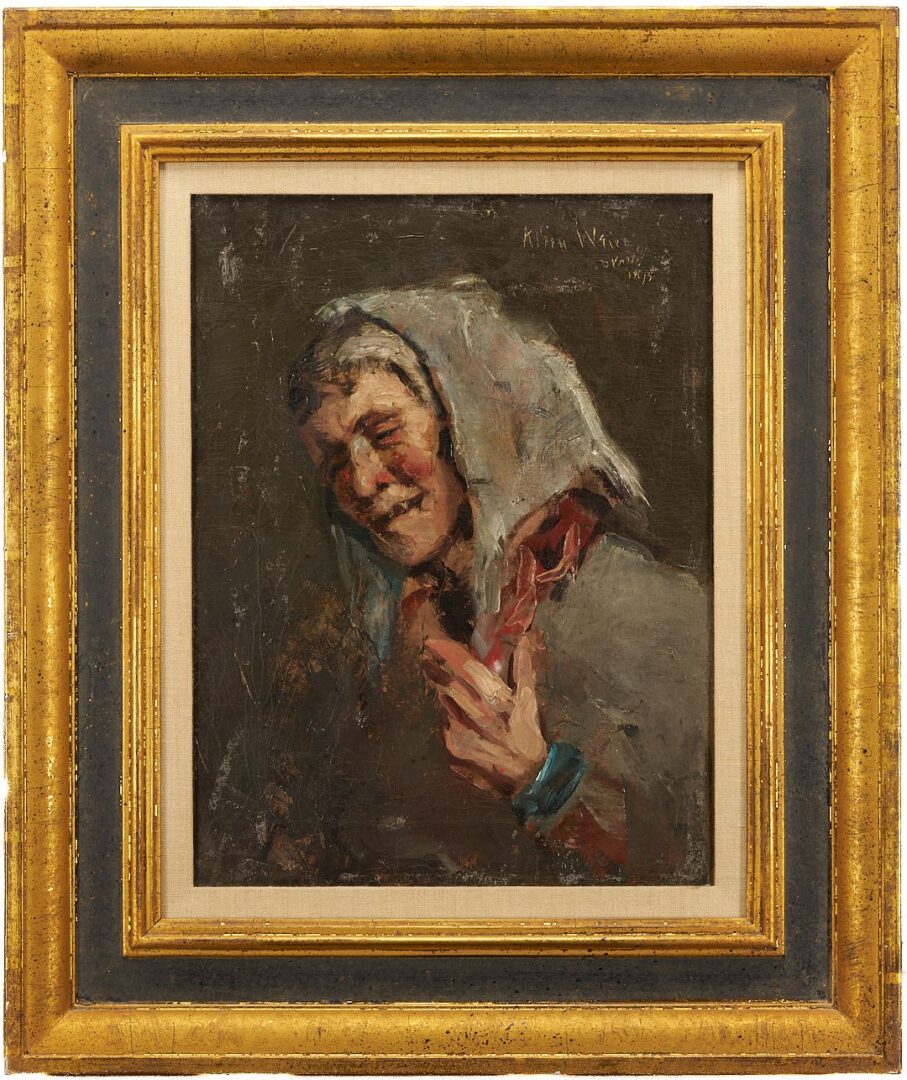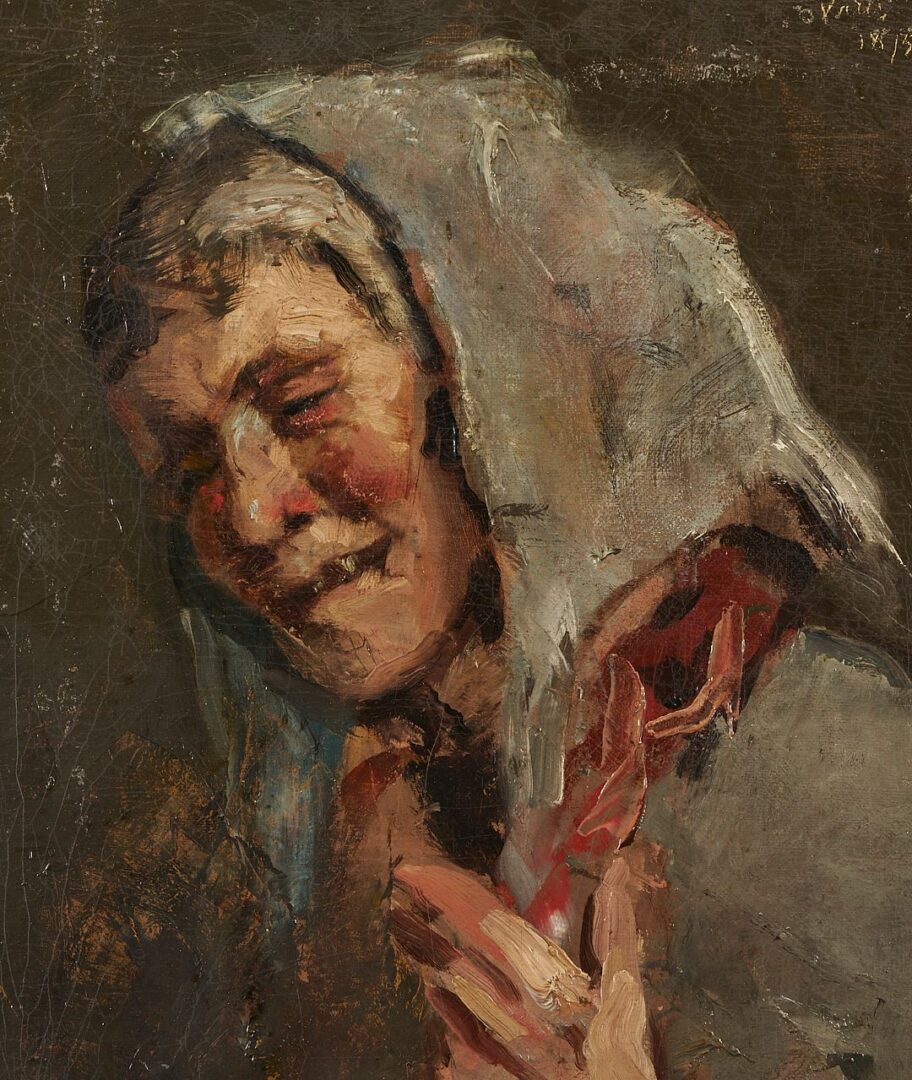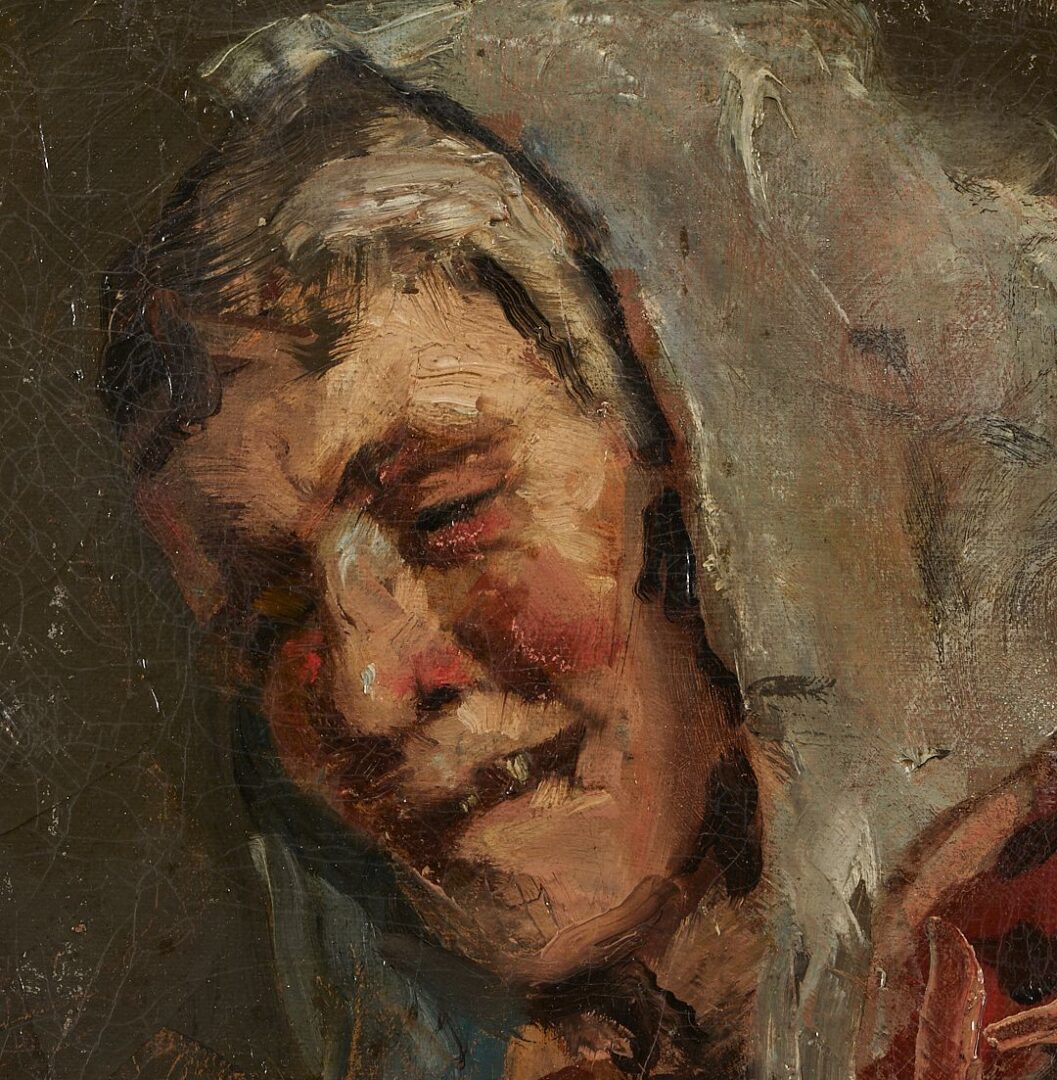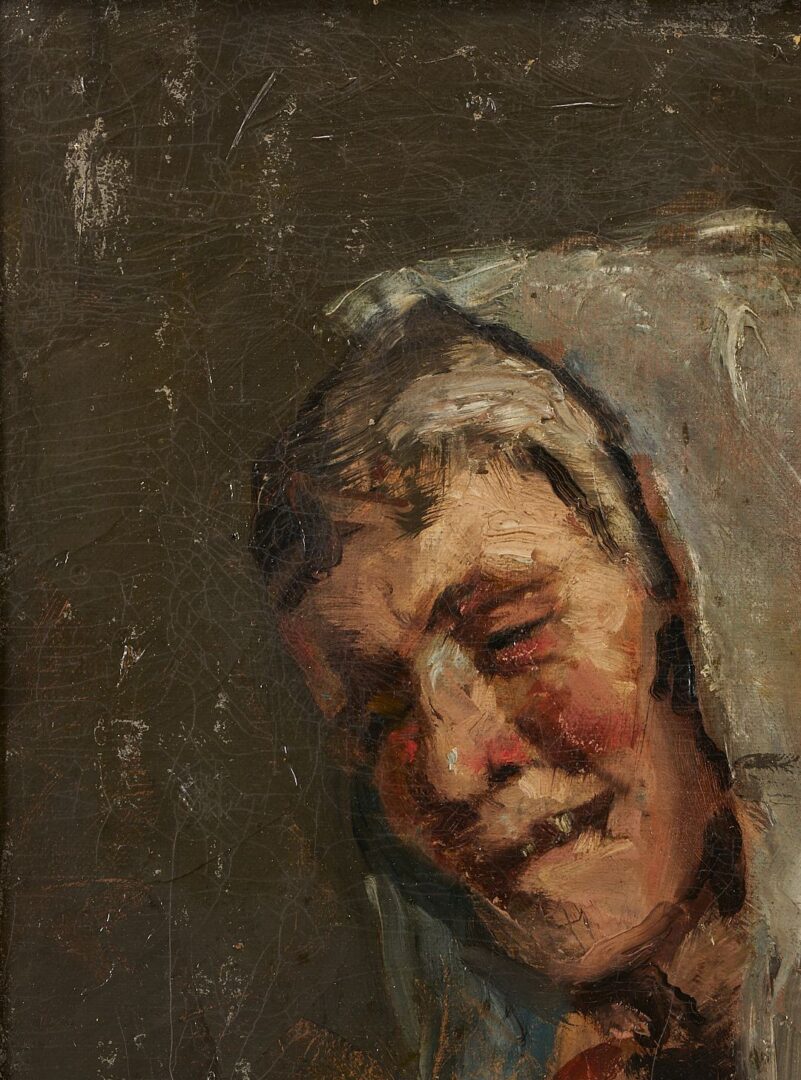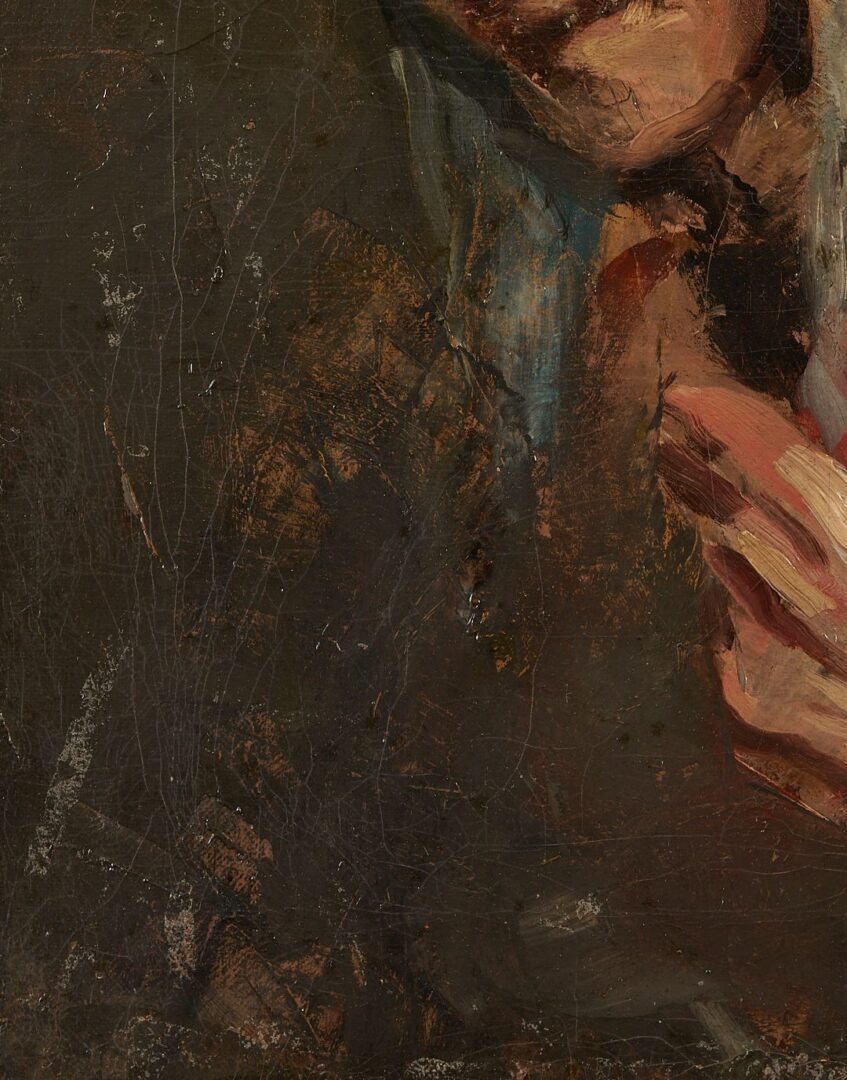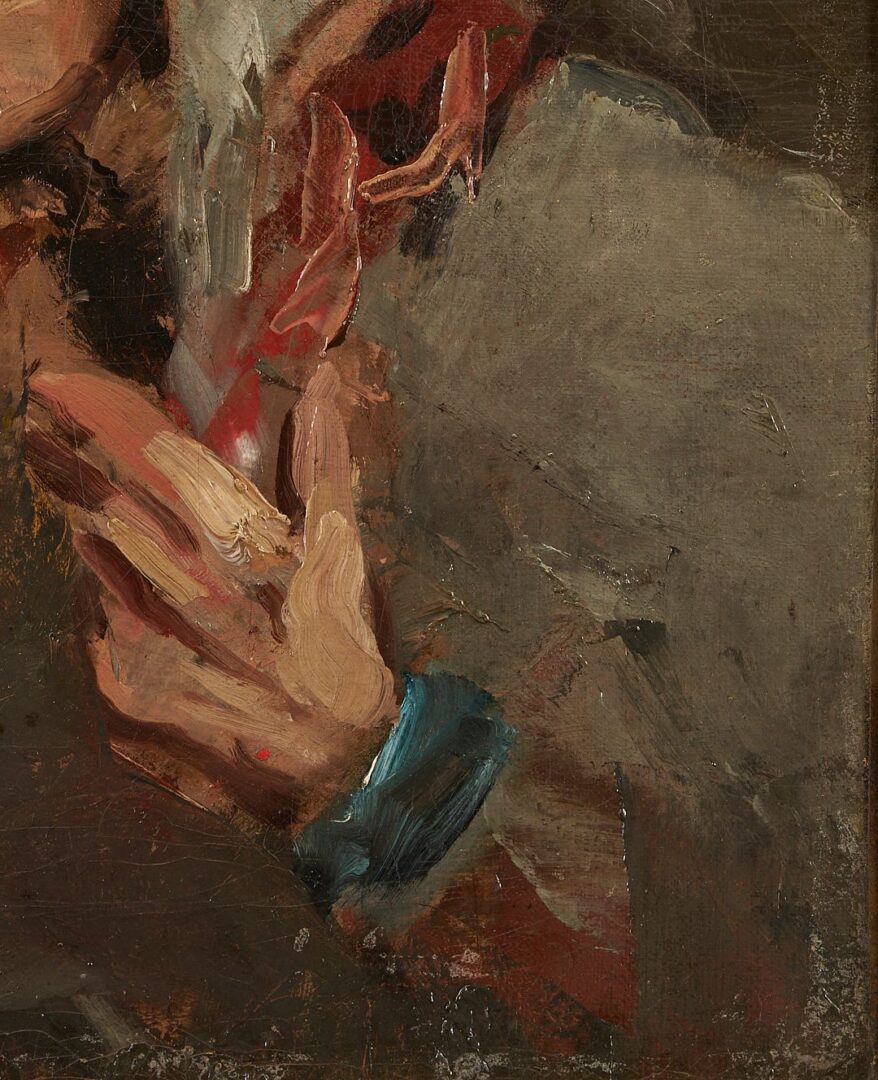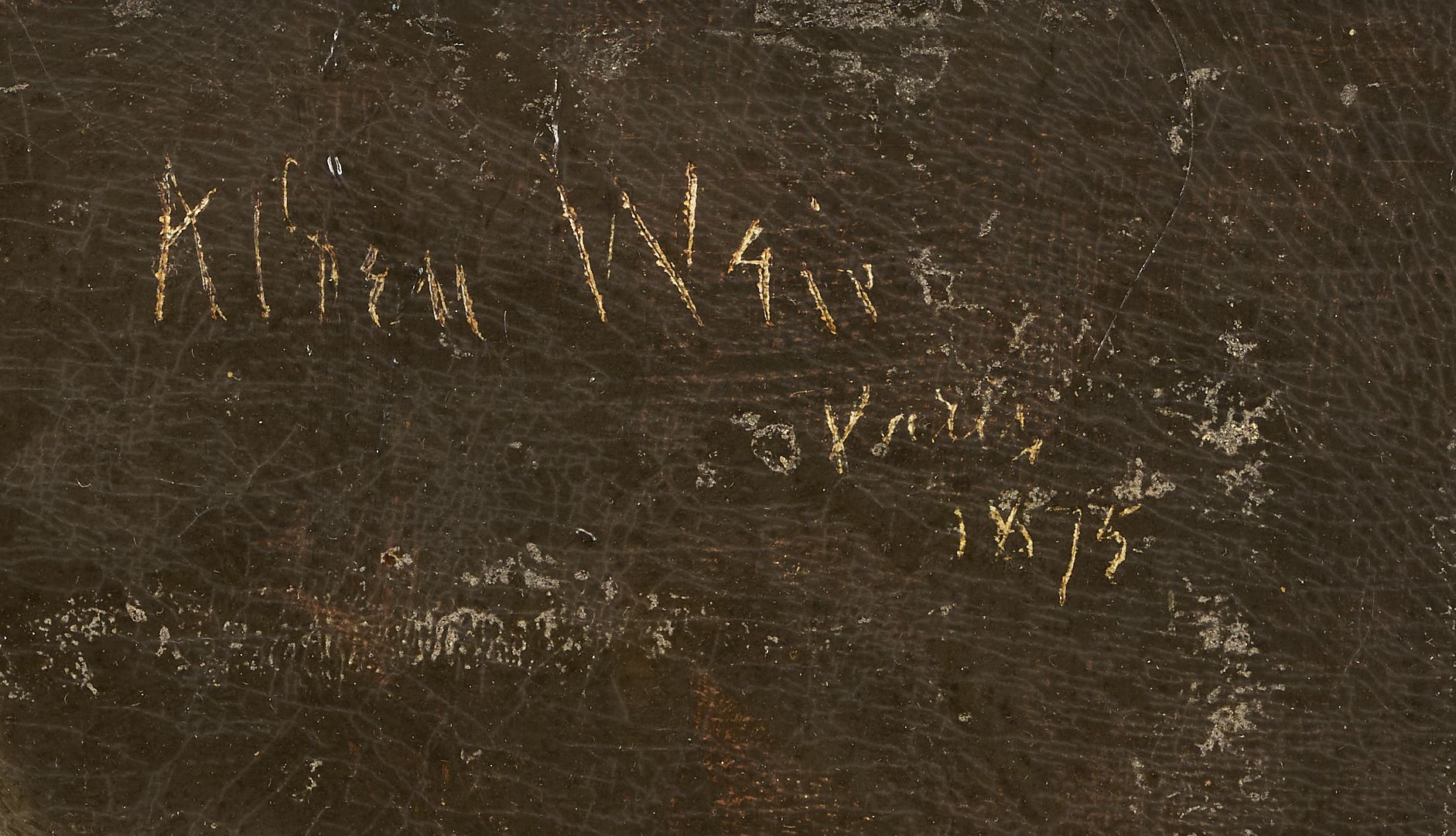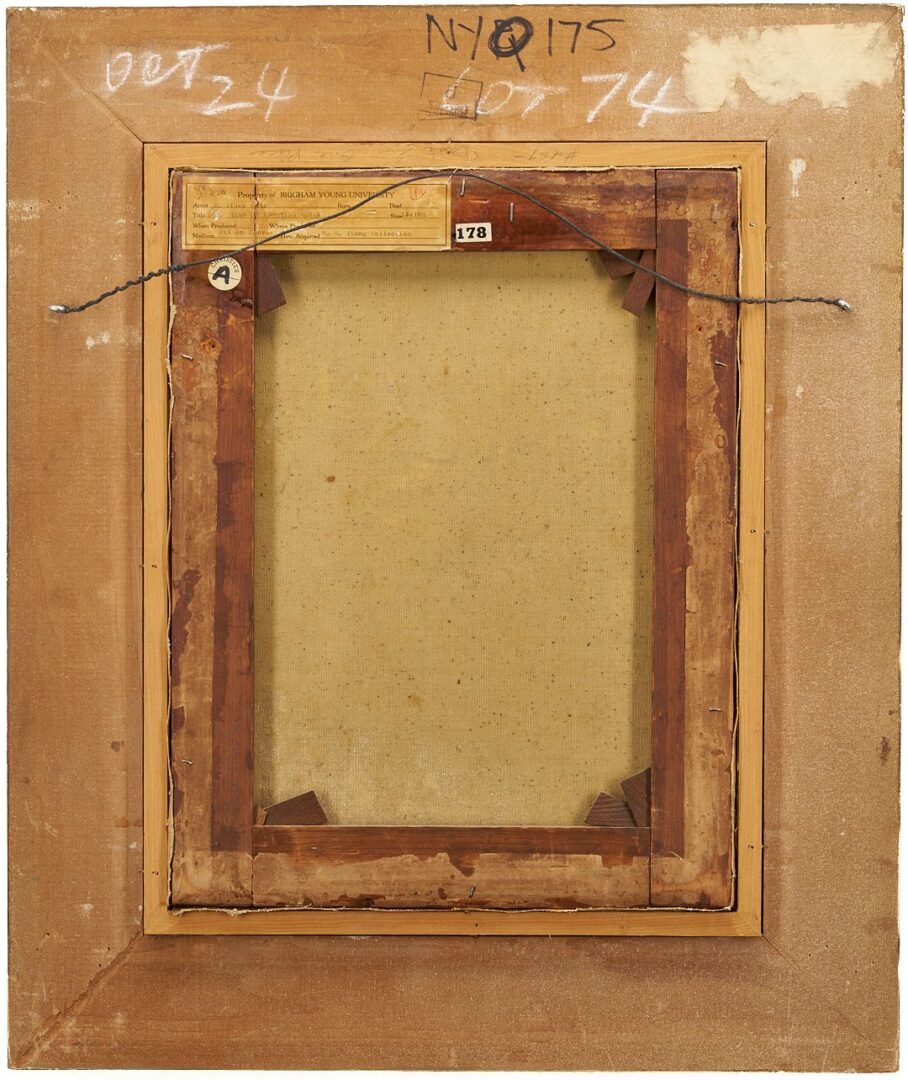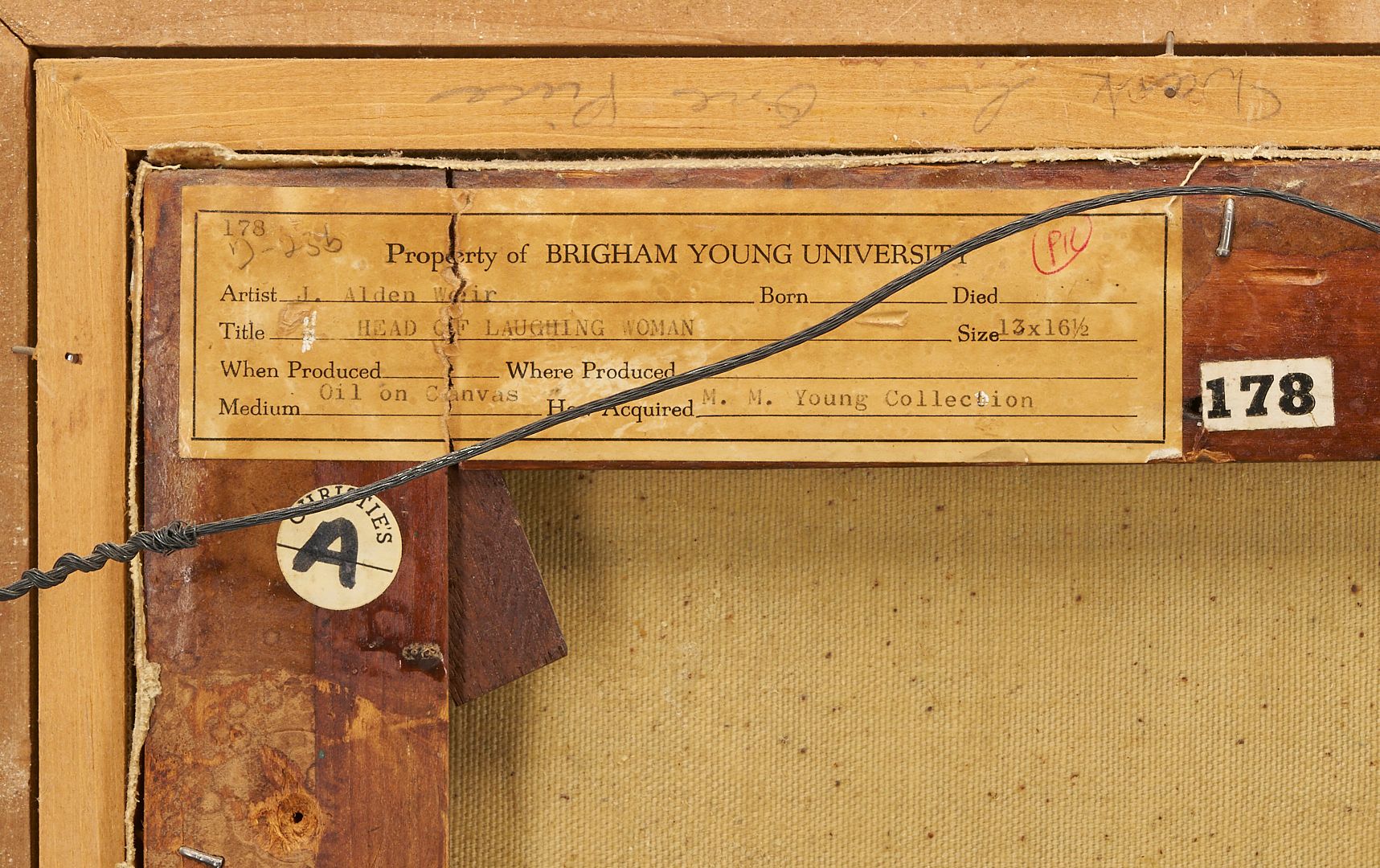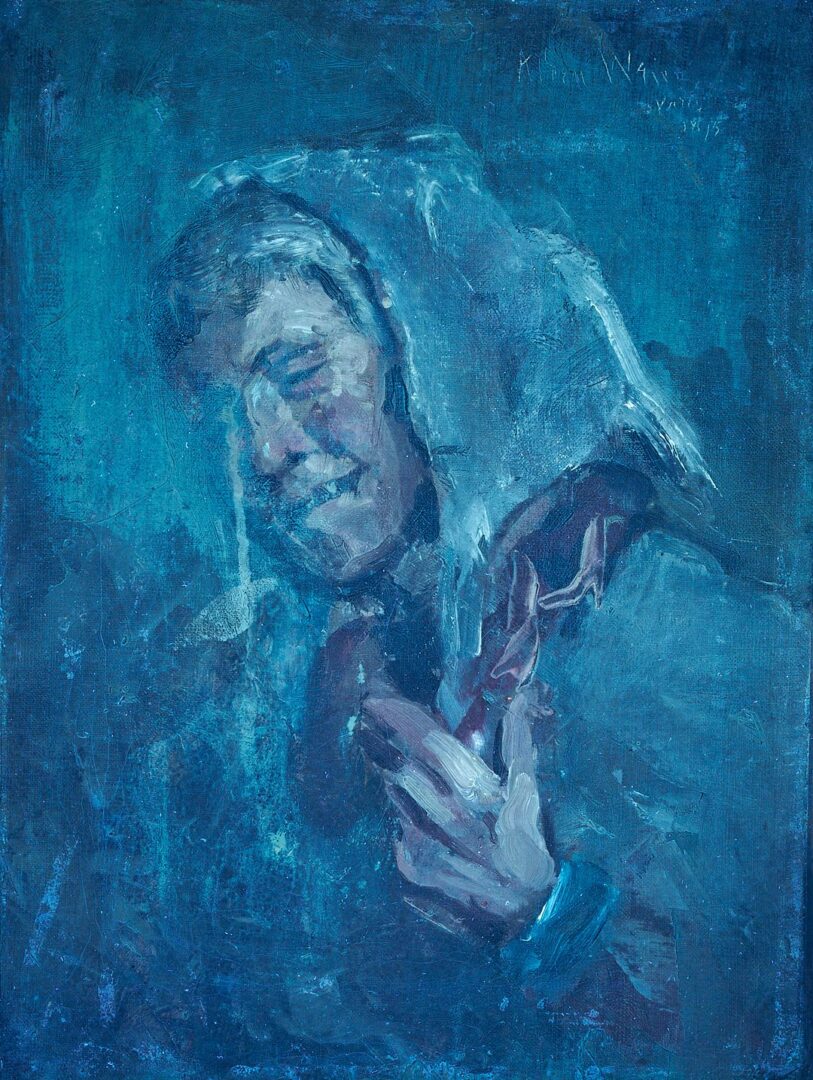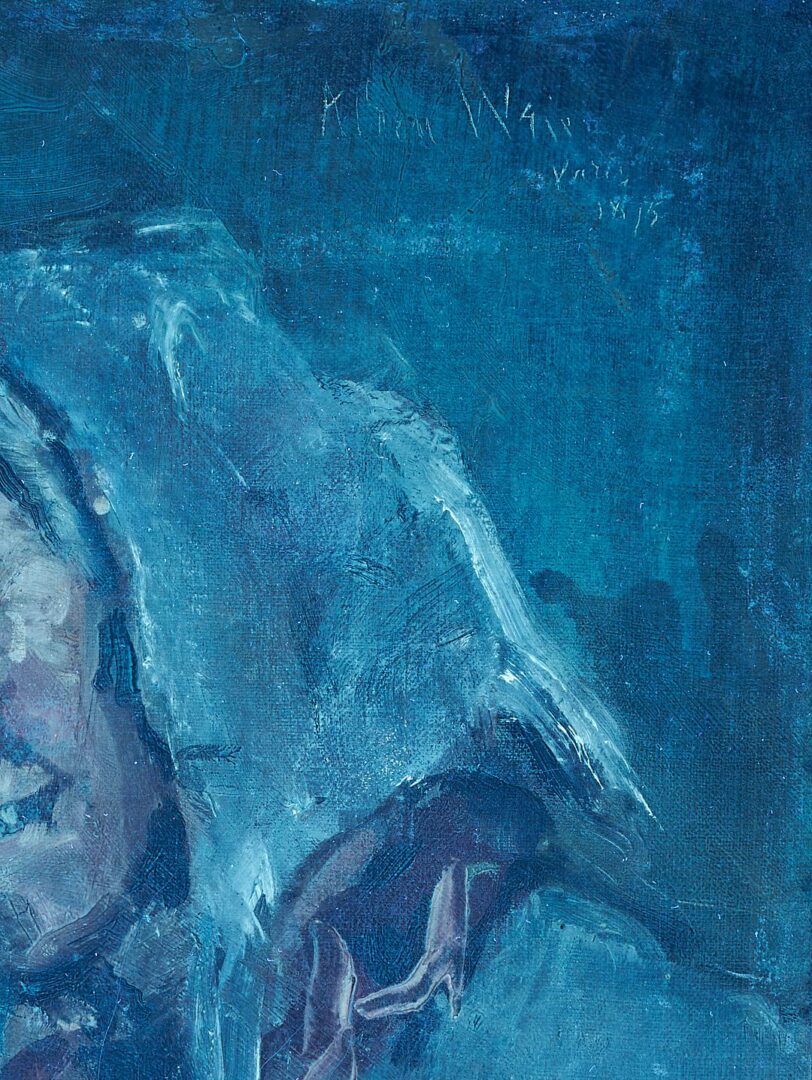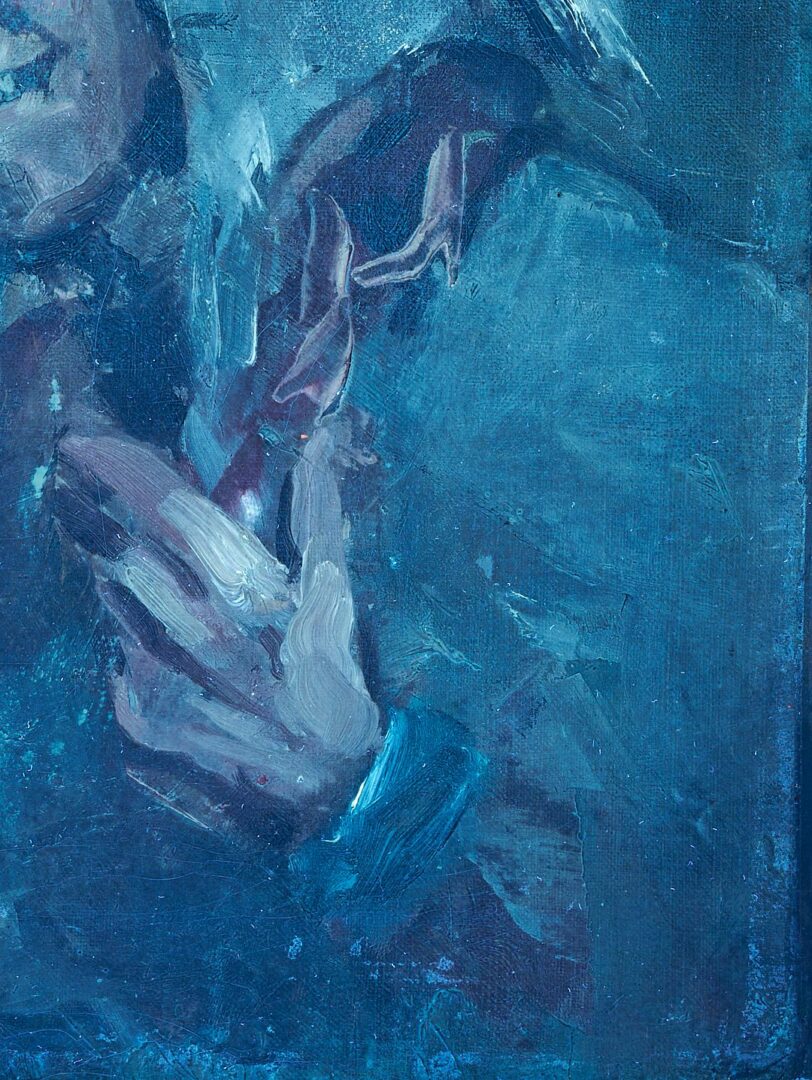SOLD! for $793.00.
(Note: Prices realized include a buyer's premium.)
If you have items like this you wish to consign, click here for more information:
Selling with Case- Low Estimate: $1,000.00
- High Estimate: $1,200.00
- Hammer Price: $650.00
- Share this:
Julian Alden Weir (American, 1852-1919), “Head of Laughing Woman,” oil on canvas painting depicting an older peasant woman, her head tilted and face and body turned and partly obscured by shadows, as one hand reaches toward the end of her headscarf. The background and her clothing below her neck are rendered with gestural brushstrokes and very little detail except for a blue bangle on her wrist. Signed and dated, “J. Weir / Paris / 1873” upper right. Housed in a molded ebonized and gilt wood frame. Label en verso of stretcher for Christie’s and an undated label from Brigham Young University stating the painting was acquired from the M.M. Young Collection. Sight: 16 in H x 12 in W. Frame: 24 in H x 20 in W. Note: “In 1959, Brigham Young University received a major addition of almost 12,500 artworks to its collection through the estate of American artist Mahonri M. Young, a grandson of Brigham Young. This remarkable gift and purchase included thousands of pieces by Young, as well as a trove of works from the collection of his wife, Dorothy Weir Young, daughter of notable Impressionist artist Julian Alden Weir. Dorothy’s collection included her own work, over 1,000 pieces by her father, and many artworks that her father had collected.” (Source: Brigham Young University Museum of Art). Biography: J. Alden Weir was one of the leading first generation American impressionist painters. His first instructor was his father, the artist Robert W. Weir. He later studied at the National Academy School in New York and in Paris during the mid 1870s with with Jean Leon Gerome at the Ecole des Beaux Arts. His friendship with Jules Bastien-Lepage, French plein-aire painter, encouraged Weir to work directly from nature, concentrating on atmospheric light and everyday subject matter such as peasants working in the fields. Another influential friend was James MacNeil Whistler, known for his loosening of style and dark tonalities.
By 1883, Weir had returned to New York where he supported himself and his family with portrait painting and teaching. He became associated with Childe Hassam and John Twachtman (with whom he traveled in Holland and held joint exhibitions. Weir helped found the Society of American Artists, and was an organizer of the 1913 Armory Show in New York, which introduced avant-garde European art to the American public. He was also President of the National Academy of Design from 1915 to 1917. Five years after his death in 1919, a memorial exhibition of his work was held at the Metropolitan Museum in New York. (Sources: William Gerdts, “American Impressionism”; Matthew Baigell, “Dictionary of American Art”; Michael Zellman, “300 Years of American Art”.)
PROVENANCE: The estates of Ervin and Jane Entrekin, Nashville, TN; Brigham Young University, ex-Mahonri M. Young collection.
CONDITION: Canvas has been lined. Craquelure throughout; faint whitish drip stain visible under UV light extending from subject’s right eye to chest. Some scattered spots of blooming to varnish, primarily outside of figure.
